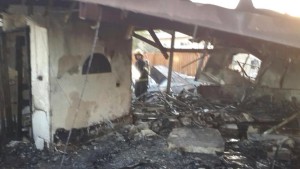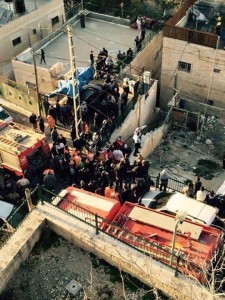Building a Network of Services for Asylum Seekers in Jerusalem
We last described some of the efforts that we’re making to help African asylum seekers living in Jerusalem here . But in looking back since our first post on the subject in August 2013, we can be very, very proud. Not only can we report about achievements here and there, we can describe a whole network of services – from health care, to education, to employment, to social and welfare rights – that we have developed, together with a wide range of partners, from the Jerusalem Municipality, the Jerusalem Foundation, Jerusalem African Community Center (JACC), and many more. All work in tandem with the part-time coordinator we support, together with the municipality, to help to improve the quality of life of African asylum seekers in Jerusalem.As our Tal Kligman noted, “to have such a complete network of services after such a short time for a relatively small group of people, is nothing short of amazing. the community of African asylum seekers in Jerusalem has many needs and they are in a very difficult situation. But they are on the map, and there is a whole consortium of agencies and organizations that is looking out for them. We are proud to be part of this endeavor.” While the needs are very great, below are some examples of how far we’ve come.
Health Care. We’ve been working with the Meuchedet Health Services, which provides health care to most of the asylum seekers in Jerusalem. (Read here for an earlier blog post). This cooperation has continued, with vaccination drives for children, translation of forms to Tigrinya (the language spoken by asylum seekers from Eritrea, the most populous group), and ongoing work with the help of our Cultural Competency desk. There has also been joint work with the local well-baby clinic. We wrote here about the first aid evening for mothers that we held last year (including the black baby manikin that was used for CPR), followed by other first aid courses and workshops for parents. Workers and volunteers were on hand at the clinic on days they brought their children, to help them with language and other issues.
Education. We are part of an early childhood forum, which also includes the JEA, municipal welfare department, community representatives and other organizations, which seek to discuss the needs of the community and explore responses. We helped to translate school and kindergarten registration forms into Tigrinya, provided translation services during parent teacher conferences in the kindergartens. Together with the Jerusalem Education Authority (JEA), we held special registration days for public kindergartens with translators on hand, which included translating the registration forms, in the late afternoons and evenings, when the working parents were off work. These evenings were crazy (as in, not very orderly, but what can you expect with 3-4 year-old children running around in the evening?), but also very, very important. Until now, registration was either via the municipality’s web site (which is in Hebrew only), or physically, at the municipality building, which is also in Hebrew. Some children were registered and did attend municipal frameworks, but there were too many incidents where young children were left alone while their parents were at work. These included reports of a 4-year old child was seen wandering the streets unsupervised, or of a 3-year old girl who was babysitting for her younger siblings when her parents were at work. These children need to be in constructive frameworks.
Work with the children of asylum seekers doesn’t end with placing them in kindergartens. When there, many do not know Hebrew, which leads to behavioral problems and cognitive delays. In order to help the children, as well as the parents and the teachers, this past year the children were given didactic evaluations, thanks to the Jerusalem Foundation. The evaluations will enable the children to receive extra assistance, and help the teachers to integrate the children better into their classes.
Social Services. Programs included:
- A parenting program operated by the municipal welfare department, targeting parents and children, aiming to strengthen parenting skills.
- An information evening about workers’ rights, operated by the Lev Ha’Ir Community Council, together with the Worker’s Hotline organization and JACC.
Community. A number of initiatives aimed at integrating the community better into the general Jerusalem community. These programs are in cooperation with the Center for International Migration and Integration (CIMI) and the Lev Ha’Ir Community Council, which provides programming for all populations in the city center. Activities included:
- Meetings between Israelis and asylum seekers
- Story hour for Israelis as well as asylum seekers, featuring a story about about children of asylum seekers.
- Hosting in neighborhood Sukkoth during the Sukkoth holiday.
- Tour of the Nahlaot neighborhood, showing community members the different institutions, community gardens, and stories of the neighborhood. Participants said that this tour was something special. There were dozens of children and their parents who ran through the alleyways of Nahlaot, most of them African asylum seekers, and some Israelis. At the Community Center the community social worker told them about the different activities and services available there, and invited families to take part. At the Barbur Gallery the children made plants in the community garden and the director told them about the place itself and the community gardens in the area.




